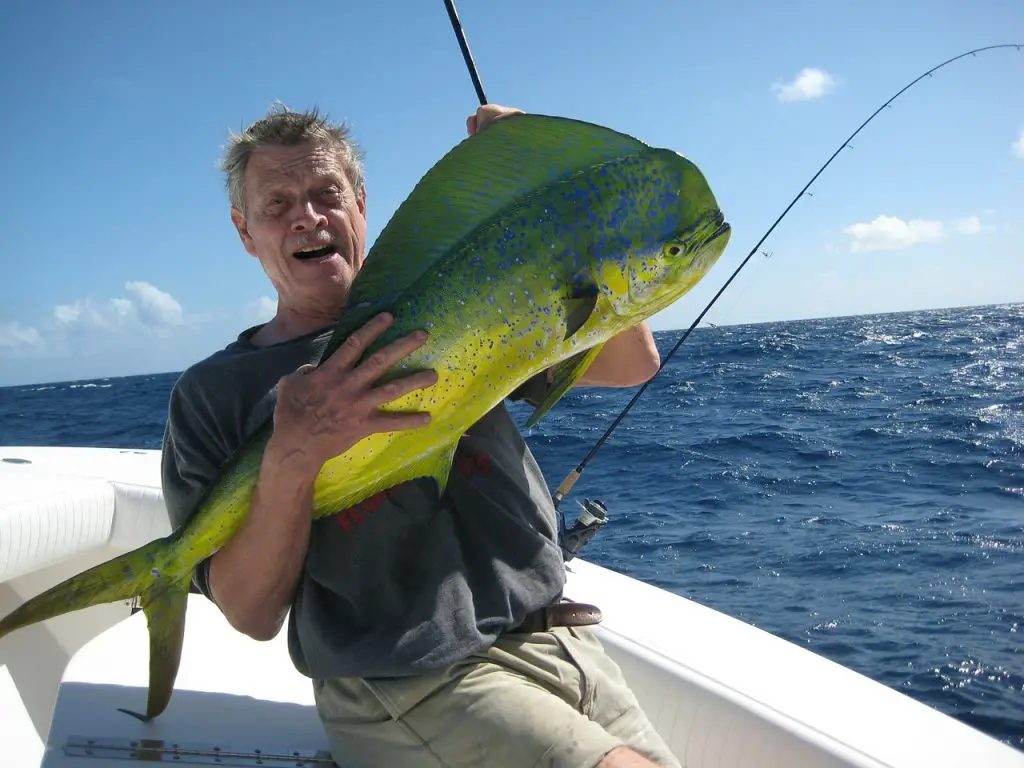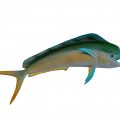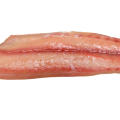
Mahi Mahi is unique in that it has a huge head larger than the rest of the body. It has a
body that thins with its proximity to the tail. It also has a large dorsal fin
that extends from the top of the head directly to the beginning of the rear. Despite
its generally long size, fish usually only live up to four years.
Physical characteristics and coloring
It is a fish with excellent colors, and its fish colors may vary depending on water
conditions. Sometimes it is affected by the number of algae and the primary
source of fish feed in the area where they live. The other circumstances
include water in which they are usually green to bright during the evening and
blue on both sides during the morning. Sometimes the color is more prominent on
both sides. Then, as soon as they come out of the water, the fish becomes a
kind of gold, which eventually turns gray when they die. Gold is often shaded
in beautiful bluish green in the direction of the upper part of the main body,
and then the color changes to the lower part of the green, yellowish in the
body, and be a yellow abdominal area often.
Expensive
Many anglers appreciate mahi Mahi for many reasons, such as its unique appearance, color and
size, which can reach more than 70 pounds and reach several feet. It is also a
fatty or slightly fatty fish, but there is still a slice of very delicious meat
that is a delight for the fishermen who catch them, as well as many restaurants
that sell them on the menu. The sports fishermen pursues this type, not only
because he eats well, but also because of his ability to fight in a hard and
arduous battle.
The old trick used by many experienced fishermen is to let the first day of Mahi Mahi
swim a right pixel of the bow. That takes advantage of the school nature of the
species and will undoubtedly attract more. When you are using this technique,
it is rare to go home with only one mahi mahi.
Mahi Mahi habitats
When going to fish mahi mahi, you must first know the easy way to determine your location,
in the water in which you live. One of the best methods is to find water areas
with structures or floating debris, such as trees that fell in the water, logs,
drifting buoys floating buoys moored, and even areas where you just found a big
boat.
It usually occurs in Mississippi waters from summer through autumn, or from June through
October. They may also see along the shores of Ecuador, the United States,
Costa Rica and Japan. Mahi Mahi is in high demand in Japan, Europe, the United
States and the Caribbean. Annually, the harvest of Mahi Mahi usually reaches
40,000 tons.
Mahi Mahi Fishing
When you fish in the Mahi Mahi area, the most common way to locate them is to spray
water with a commercially purchased pigment bag, which makes Mahi Mahi very
enthusiastic, and then throw or try it in the area. It bites quickly, and
usually close to the surface. Along torpedo like the shape with a forehead bent
over the male is what can be easily identified. Their faces are rounded and
unique closer to Pompano, which is a relative of dolphins.
When they are connected, Mahi Mahi will fight a fierce battle, will have high power to be
a strong opponent and will execute short bursts, often wholly ejected from the
water, and then they can suddenly turn and dive deeply in an attempt to escape.
The best lures of mahi mahi fish
When they use lures in Mahi Mahi, they seem to prefer more spinners and floating baits,
which has long skirts that resemble squid or octopus claws. Whether you are
fishing water in Mahi Mahi, whether you are grinding water first or not, some
of your favorite baits. Crabs and bait fish can live entirely and cut into
pieces, especially if you are interested in mahi mahi; it does not matter if
the baitfish is alive or dead.
Mahi Mahi Sizes
The average size of fish commonly used for commercial purposes is between 7 and 13
kilograms or about 15 to 30 pounds. It is rare to see this fish weighing more
than 40 pounds, mainly because it often lives only a very short life. Leaders
come with a 30 to 50-pound test and are recommended because they are fierce
fighters who often break the surface and jump or try to escape. The battle of
Mahi Mahi has been compared to the fight of Wahoo and the fish and deserves the
price of the entrance. The popular name Mahi Mahi means very strong in Hawaii.












Pingback: What Is a Skipjack, and What Other Fish Do They Make Good Bait For? | Reel Fishing Guru